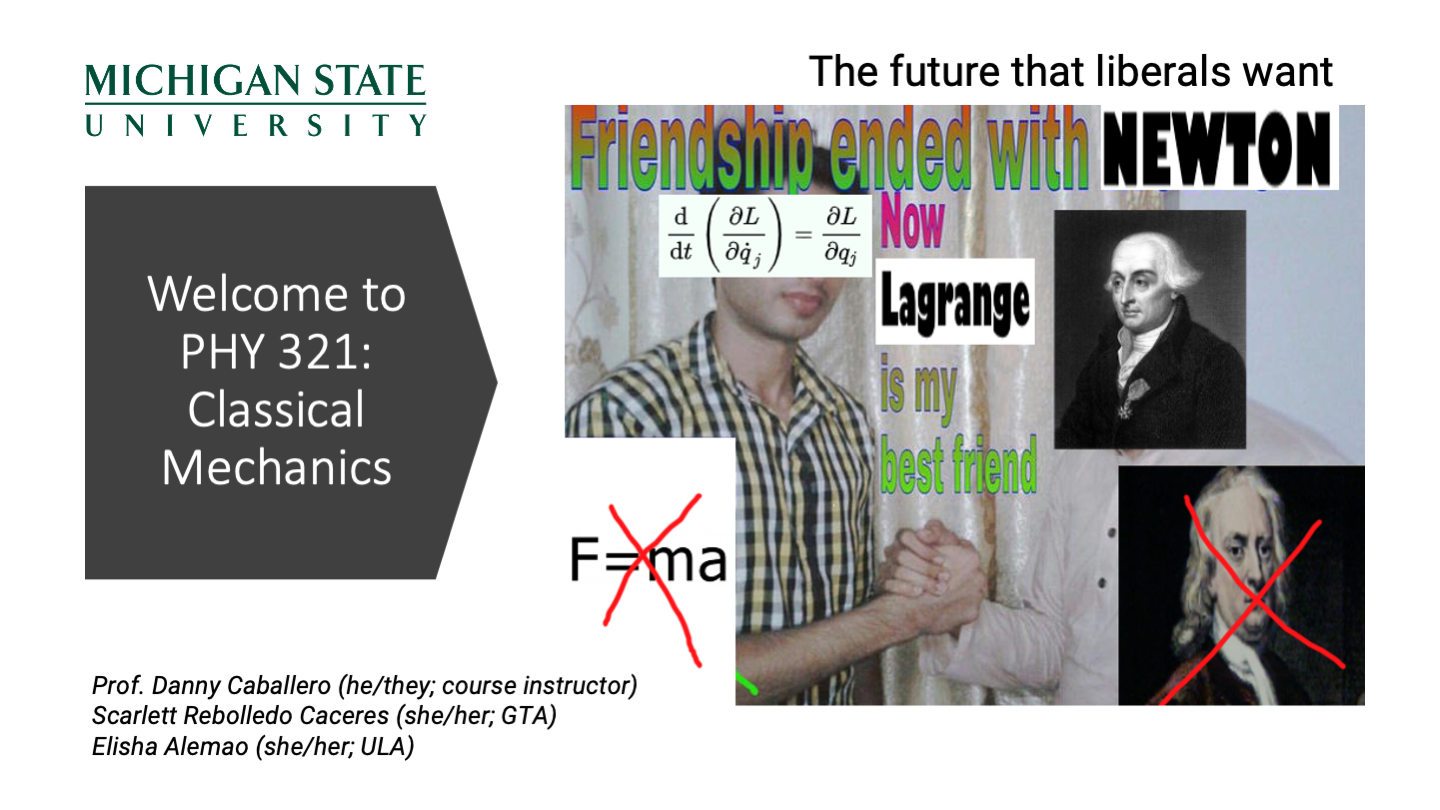Day 31 - Euler-Lagrange Equation#

Seminars this Week#
WEDNESDAY, April 2, 2025#
Astronomy Seminar, 1:30 pm, 1400 BPS, Andy Tzandikas, Univ. of Washington, Title: Searching for the Rarest Stellar Occultations
PER Seminar, 3:00 pm., BPS 1400, Abigail Daane, Professor of Physics, South Seattle College, Title: The obstacles, stumbles, and growth in examining the “decolonization” of physics education
THURSDAY, April 3, 2025#
Colloquium, 3:30 pm, 1415 BPS, Alex Sushkov, Boston University, Title: Nuclear magnetic resonance at the quantum sensitivity limit
Reminders#
We proposed a solution to the line problem that involved an error term \(\eta(x)\), which is a small perturbation to the true path \(y(x)\). This leads to a perturbed function:
where \(\alpha\) is a small parameter.
We proposed that there’s a functional \(f(Y,Y',x)\) that depends on a function \(Y(x)\), its derivative \(Y'(x)\), and the independent variable \(x\) such that:
Reminders#
By taking the derivative of the functional with respect to \(\alpha\), we can find the condition for which the functional is stationary (i.e., a minimum or maximum).
This (with a lot of math) led us to the following expression:
Clicker Question 31-1#
We completed this derivation with the following mathematical statement:
where \(\eta(x)\) is an arbitrary function. What does this imply about the term in square brackets?
The term in square brackets must be a pure function of \(x\).
The term in square brackets must be a pure function of \(y\).
The term in square brackets must be a pure function of \(y'\).
The term in square brackets must be zero.
The term in square brackets must be a non-zero constant.
Clicker Question 31-2#
Returning to the line problem,
here, \(f(y,y',x) = \sqrt{1 + (y')^2}\), where \(y' = \frac{dy}{dx}\).
Apply the Euler-Lagrange equation to find the expression for the function \(f(y,y',x)\) in this case. Write your result to find the expression for the term in square brackets:
Click when you have an answer!
Clicker Question 31-3#
With,
where \(c\) is a constant, the solution expresses a straight line.
True and I can prove it!
True, but I’m not sure how to prove it.
False, I think this is incorrect.
I don’t know.
Clicker Question 31-4#
We derived the time that it takes to run from a point on the shore to a point in the water, \(T\):
To find the minimal time, what derivative should we take?
\(\dfrac{dT}{dx}\)
\(\dfrac{dT}{dy}\)
\(\dfrac{dT}{dt}\)
Something else?
Clicker Question 31-5#
For the brachistochrone problem, the ball moves purely under the influence of gravity. Consider that the ball has moved a vertical distance \(\Delta y\) from rest. What is the speed of the ball at this point?
\(v = gt\)
\(v = 2 g\Delta y\)
\(v = \sqrt{2g\Delta y}\)
I’m not sure, but \(<\sqrt{2g\Delta y}\)
Something else?
